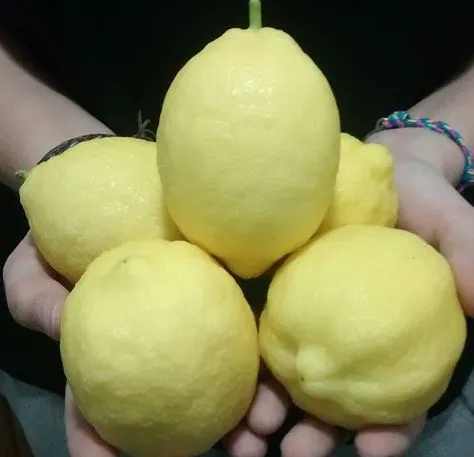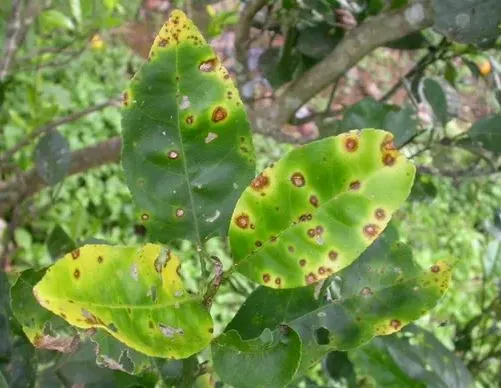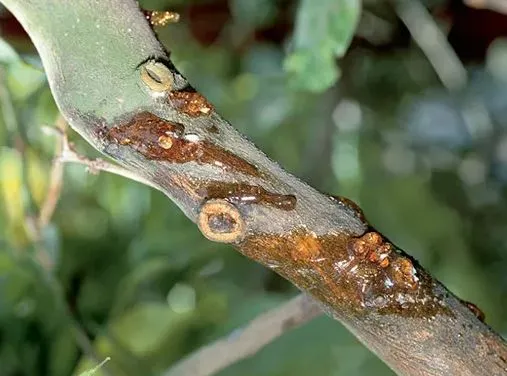In today’s article we are going to learn a little more about lemon tree diseases. To do this, we will focus on observing what are the main symptoms that we can observe in the trees and, once identified these symptoms, find out who is the culprit.
In this way, the goal will be to have lemons as healthy as the ones I show you in this picture:

Contents
Lemon tree diseases: leaves and fruits
Most of the lemon tree diseases that we are going to show you in this article are caused by fungi. However, there are other very important diseases transmitted by insects such as aphids (especially viral diseases) that can cause serious damage to our lemons. The damage that insects or other arthropods can cause on fruit trees will be explained in the following articles.
Yellow leaves
Sometimes, if we look closely, the leaves of our tree have yellow spots. These yellow spots can be larger or smaller. For example, we can often observe small yellow spots that evolve into darker spots. Normally whenever a spot evolves in this way it is a fungus. In this case it could be Cercosporiosis, as shown in the following photo.

In addition to yellow leaves, sometimes we can observe leaves of a darker color, almost black. In this case the disease is known as Anthracnose and can be caused by a fungus called Colletotrichum limetticolum.
Wrinkled leaves
Sometimes, we can see that our trees have wrinkled leaves. These symptoms can be due to several reasons, among them: fungal infections, viruses, bacteria, leaf miners (usually caterpillars) or lack of nutrients. In order to identify the cause in each case, we must examine how these symptoms evolve.
Lemons with brown spots
If one day you look at your lemon tree and see that it has brown spots on the skin, it may be due to several things. One of the main causes may be a fungus called Alternaria. Around 20% of agricultural losses are caused by this fungus. It is advisable to avoid injuries to the skin of lemons as these wounds are ideal for fungi to enter.
There may also be other types of discolorations caused by insects or mites such as Tetranychus urticae.
Problems in the bark of the lemon tree
The bark of the trunk and branches of the tree can suffer from various diseases caused mainly by viruses and bacteria. Among the most common symptoms are the appearance of a kind of gum or resin, the detachment of the bark, the drying of the branches, etc.
Gummy bark: sticky lemon tree branch
Occasionally we can observe a kind of gum or resin on the bark of the lemon tree, especially at the base of the trunk. This may be due to the tree roots being rotten due to a fungus called Phytophthora. This disease can also affect the branches of the tree as we can see in the following image:

Damaged bark
Other lemon tree diseases can be caused by viruses. In this case we can observe how the bark of the tree begins to dismember. This type of disease can be known as “tristeza”, causing a reduction in production and sometimes the death of the tree. To treat virus-related diseases and, above all, to avoid them, it is recommended to use healthy material.
As in the previous case, branches can also be affected.
How to combat lemon tree diseases
Once we know what the main lemon tree diseases are, we must learn how to combat them. However, as you know it is much more important to “prevent than to cure”. Here is a list of some tips that will help us to avoid the appearance of this type of diseases in our trees:
- Choose resistant varieties
- Avoid planting the tree in very hard soils.
- Try not to cause wounds with machinery
- Avoid excessive water at the base of the trunk.
- Drip irrigation works better than sprinkler irrigation as it avoids excess humidity near the trunk.
- Remove affected parts
- Disinfect equipment and machinery prior to any treatment.

